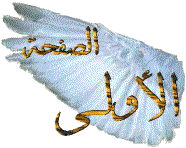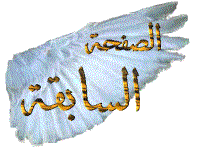The struggle for Orthodoxy requires selfless courage. This is evident from the centuries long history of the Church. Thanks to the struggles of martyrs and confessors of faith, whole countries at times were saved from invasion of false teachings, heresies, and impiety.
The Holy Mount Athos has always been a "barrier against which the waves of heresies would break" [532]. From ancient times this sublime institution, the domain of the Mother of God, which lived in accordance with Divine principles, has been the stronghold of Orthodoxy. In guarding the faith of the Holy Fathers, Athonites (hagiorites), for centuries, have been an example of piety to all Christians of the world. Having renounced the world and entirely dedicated himself to serving God, "a true monk fears neither the imperial purple, nor the mitre of a patriarch, and is prepared to endure anything joyfully and happily for the love of the Orthodox faith, which is his greatest treasure . ... Monastic hood does not bow before any masters who disdain the Divine Law and the Sacred Tradition, and who subject the Faith to sinful people desirous of worldly things, to people obedient to Satan." [533]
From the time when St. Athanasius founded the Great Lavra in 963, Mt. Athos was protected by Byzantian Emperors and was given into the possession of Orthodox monks who inhabited it. Beginning with the 10th century, Mt. Athos had become the all-Orthodox center of monasticism, the place of ascetic struggle not only for Greeks, but other Orthodox monastics as well -- Russians, Bulgarians, Georgians, Serbs, Rumanians, and others.
In the course of centuries, spiritual and theological authority of Mt. Athos was very remarkable and it rose particularly in the 14th century due to the development of hesychasm, the spiritual essence of which made a deep impression on the culture and character of the peoples of Russia, Balkans, and the Middle East.
During the Turkish occupation Mt. Athos was practically autonomous, and only in 1917 did it fall under the control of Greece. Since that time the Greek government, exercising its power over this new territory, began to pursue a chauvinist policy, trying to make the Holy Mount exclusively Greek, i.e. to get rid of the monastics of other nationalities [534]. However, the realization of this plan was hindered by international agreements which defended the rights of monastics of non-Greek origin [535].
On the other hand, the events following the turmoil of 1920's caused by the calendar reform, which was instigated by one of the most odious personalities of the 20th century -- "Patriarch" Meletius (Metaxakis), served the purpose of this policy, and the Greek government did not fail to take advantage of them. Since that time the government began to rudely interfere in the internal affairs of Mt. Athos and the persecute of the uncompromising ascetics whom it found objectionable. The Patriarchate of Constantinople, to which jurisdiction Mt. Athos belongs, and which at the present time is traditionally comprised, as we have seen, of modernists-masons, has been staunchly supporting civil powers, helping them to undermine Athonite traditions and principles. This apostatic "symphony", which has nothing in common with the Justinian symphony of the Emperor and the clergy, judging by the present situation, directs its efforts to a gradual destruction of the Holy Mt. Athos. This assertion is proved in particular by the sharp decrease in the number of Athonite inhabitants. Thus, the celebration of the millennium of Mt. Athos in 1963 was marred by the announcement of the fact that during about half a century the number of monks was reduced from 7500 in 1903 to 1560 in 1963 [536].
From 1970's Mt. Athos has been gradually populated by ambitious young men agreeable to the government authorities, the so called "New Athonites" [537]. Many of them are university graduates, who, contrary to the age-old hagiorite decrees and under the pressure of civil powers, have been appointed abbots of monasteries. They are precisely the ones who help to implement the policy agreeable to both the civil authorities and the Phanar [538], by destroying monasticism and being accessories to persecution against those who remain faithful to Orthodoxy.
On observing the anti-canonical actions and deviations from the Holy Tradition and Orthodox Ecclesiology of Constantinopolitan hierarchs-renovationists and ecumenists, hagiorites wrote open letters to them on frequent occasions and censured them, openly expressing disagreement with the stand of the Phanar.
The election of Patriarch Athenagoras, a high-ranking member of an American masonic lodge, and an adherent of the "branch theory", has made the difficult situation even worse. It should be noted that Athenagoras' election was dictated by the USA which wanted to ensure the improvement of relationships between Greece and Turkey (the latter is a country to which USA is especially attentive, because of its strategic position). Athenagoras' predecessor, Patriarch Maximos V, who proved to be a much stronger traditionalist than Athenagoras, was deposed without any reason and confined as a mentally ill person in Switzerland, where he was deprived of the right to officiate in divine services or to act in a capacity of a hierarch. Several people, who managed to visit him at the end of the 1950-ies, have testified that he was neither mentally ill, nor of unsound mind [539].
Everyone is familiar with Patriarch Athenagoras' policy: rapprochement with the Vatican and a willful lifting of anathemas from the Papists, accompanied by an active adogmatic ecumenical activity, which has been continued by his successors.
"Much less is known, however, about the wave of profound indignation at the destructive action of Athenagoras, which had surged in all the Orthodox world, particularly in Greece and Mt. Athos. All the monasteries of the Holy Mount had categorically refused to commemorate him during Liturgy. In Northern Greece several bishops, who belonged to the jurisdiction of the Patriarchate of Constantinople, followed the Athonite example, some expressed a decisive protest. Among them were Metropolitans -- Ambrose of Eleutheropolis, Paul of Paramythie, Polycarp of Sisianos, and also Siatistis and Augustine of Florma. At the same time the persecution against the old-calendarists (adherents of the Church calendar of the Holy Fathers -- L.P.) was redoubled. All these monks, priests, bishops had an absolute right to express their protest; on the one hand according to the Canons of the Orthodox Church, and on the other - according to civil laws which, presumably, permit pluralism." [540]
There were many who protested at that time, perceiving the danger of a new "Florentine disgrace". In the course of time, however, despite the fact that their exhortations had no effect, some monasteries began once again to commemorate the Patriarch. However, there still remained more than half of the Athonite monasteries who suspended communion with Athenagoras and stopped commemorating him at their services.
But during the years 1970-80, in the reign of Patriarch Demetrios, who continued and even expanded the apostatic practice of his predecessor, all monasteries, except the monks-zealots and the monastery of Esphigmenou, re-established their communion with the Patriarch. This happened due to the intrigues of the patriarchal exarchate who managed "to seduce... even the elect" (Mark 13,22). The periodically occurring mysterious "suicides", or disappearances of monks [541], threats, pressure and simply persecution to which the monks who were disobedient to the heretical Constantinople were subjected, have also had their effect.
From time to time, it is true, the Athonite monasteries censured the Patriarch of Constantinople in the appeals which they have sent him. Thus, after the regrettably notorious concelebration of Patriarch Demetrios with Pope John-Paul II, which was an unprecedented act of rapprochement of the Patriarchate of Constantinople with the Papists, the Sacred Council of Mt. Athos sent a letter to Demetrios. "We have no other form of action left to us -- they wrote -- we place this into the hands of God. We now embrace silence, leaving all to Christ our God, and await the solution of this problem from Him. The Sacred Council can no longer tell hagiorites and other faithful about the strictness of Your confession and the steadfastness of Your faith, because You personally are openly professing the opposite. The Holy Mount, inasmuch as it firmly adheres to the precepts of faith and piety, cannot express its respect and devotion to the Ecumenical See" [542].
Nevertheless, the silence embraced by those commemorating the Patriarch-heretic, "not being the silence of hesychasts" [543], has since yielded to enthusiastic welcome with which the Sacred Council of Mt. Athos honored both the late Demetrios and his successor Patriarch Bartholomeos [544]. Since then Phanar has undertaken even more insolent steps and developed unprecedented ecumenical activity when in June of 1993 it concluded the Balamand Agreement with the Vatican, and in November of the same year -- the Chambesy Agreement with the Monophysites.
The open letter concerning the Balamand in which the Kinot (Sacred Council) appealed to Patriarch Bartholomeos [545] expressed in particular the idea that the ecumenical movement has turned into all-embracing syncretism. As an illustration it quoted the blasphemous words of Patriarch Parthenios (Koinidis, died 1996) of Alexandria about Mohammed [546].
The Memorandum of the Sacred Council of Mount Athos regarding the Chambesy Declaration [547] stated that the ecumenist acknowledgment of heretical churches as "sisters" casts doubt on "the continuity of the consciousness of our Church, which is but the One, Holy, Catholic, and Apostolic Church" [548].
However, both in this Memorandum, as well as in the letter regarding the Balamand Agreement, the impious and decisive role of Patriarch Bartholomeos himself is passed over in diplomatic silence. These two documents, which prove that the monasteries, brotherhoods and monastics of Mt. Athos who did not discontinue their prayerful communion with the Patriarch-Apostate, and have continued to commemorate him as their ruling hierarch, are well aware of his crime against Orthodoxy. "So many ravages has the Holy Mount endured, and still continues to endure! -- comments an Athonite ascetic -- So many monks have left monasteries and refuse to return because of the anti-Orthodox and anti-monastic acts of the Patriarch which have caused division! Today it is not the monks who are in search of a monastery, but the monasteries which are in search of monks; from all sides, monasteries are crying out loud, for they are faced with desolation... The Ecumenical (i.e. Constantinopolitan - L.P.) Patriarchate has brought all these misfortunes upon the Orthodox Church, including division and desolation on Mt. Athos." [549]
Why is it, then, that despite everything those that "commemorate" the Patriarch continue to communicate with the heretic? How can one explain that today the majority of them is silent about one of the most scandalous events in the history of Mt. Athos, reminiscent of the Inquisition of the Middle Ages -- i.e. the expulsion of Russian monks from their Skete of St. Elias on May 20 of 1992, just because they refused to commemorate the Phanar apostate? [550]
The St. Elias Skete, which was built with the donations of pious Russian compatriots and became famous for the ascetic struggle (Russ. podvig) of its great elder Paisius Velichkovsky, had been attracting thousands of Russian pilgrims before the Bolshevik Revolution. In our time, before the eviction of its monks, the Skete belonged to the Russian Orthodox Church Abroad, the legitimate heir of the historical Russia.
Beginning in 1957, the monks of St. Elias Skete ceased commemorating the Patriarch of Constantinople because of their disagreement with the pro-Catholic policy and ecumenical heresy of the Patriarchate. Their Abbot and Superior of the Skete, Archimandrite Seraphim (Bobich), who over 20 years (since 1970) had been leading the life of an ascetic on Mt. Athos, and the brethren of the Skete had spent a great deal of money and labored heavily in order to re-establish and improve this large sacred abode. From 1985 onwards the Skete was being subjected to all kinds of pressure, in order to force the monks to resume the commemoration of the Patriarch, but they would not yield.
Finally, on May 7/20 of 1992, on the feast-day of Mid-Pentecost, Abbot Seraphim and seven other inhabitants of the Skete were forcibly evicted from Mt. Athos without trial and investigation. This criminal and shameful act was committed by the Commission of the Patriarchate of Constantinople, headed by the patriarchal Exarch, Metropolitan Athanasios of Heliopolis. The eviction was carried out with the help of the representatives of the civil authorities of Mt. Athos and numerous armed police.
The request of the fathers of St. Elias Skete to be granted at least two or three days for preparations, was rejected. "Because they were under escort and strict police supervision, the monks were unable to collect not only the most necessary personal belongings, but documents as well" [551]. These Russian zealots were forcibly ushered into military vehicles and brought to Daphne via Karyes (capital of Mt. Athos). From Daphne a motor-boat delivered them to Uranopolis (outside Mt. Athos) where they were heartlessly abandoned on the pier without money or documents.
But persecution of these Russian monks on the part of the ecclesiastical and civil authorities did not end with this improbable, unchristian treatment: their request to have their passports returned to them was rejected (Archimandrite Seraphim and his fellow monks are American citizens). Moreover they were not even presented with a copy of the decision of either the Sacred Council, or of the civil authorities testifying to their eviction. All this was fabricated later. Immediately following the eviction of the Russian monks this rich Skete was plundered and occupied by the "monks" acceptable to Phanar and to the government [552].
The silence of "commemorating" hagiorites has greatly alarmed the Orthodox faithful who love Mt. Athos and who are historically accustomed to see Christ's warriors in Athonite monks, fearlessly struggling for the Orthodox faith and fearing God above all. The adherents of the Patriarch of Constantinople cannot but be aware that for many years, especially since 1970, "a silent and secret religious persecution has been taking place on the Holy Mount against the monks who remain faithful to Orthodox traditions." [553] Apart from the forcible measures already mentioned, they are not allowed to either tonsure Athonite zealots, or have novices in obedience (this is not permitted even to the eldest zealot monks). They are not allowed to buy cells for themselves and they cannot acquire the most necessary items for their existence [554].
It often happened that many monks-ascetics who had vowed never to leave the Holy Mount until they died were evicted from Athos. This was the fate, for example, of ascetic-hesychast Fr. Theodorite, the author of numerous books on theology and piety, and of monk-zealot Fr. Damian [555]. In other words, the plan of finally eliminating Athonite zealots is being actually carried out, and in such a manner as to make the believers think that no one on Mt. Athos opposes the betrayal of Orthodoxy which is being committed there [556].
Will the Holy Mount Athos, "the garden of the Mother of God," become what the subjects of the prince of this world want it to be -- a tourist spot with hotels, beaches, entertainment centers and... a Museum of Eastern Monasticism ?!
...The sacred Esphigmenou monastery has in all respects become a zealot religious community. Along with the other monks-zealots, the monks of Esphigmenou steadfastly refuse to have any communion with the apostate Patriarch. For more than 20 years the tower of Esphigmenou monastery has displayed the flag with the words: "Orthodoxy or Death". This God-loving monastic community, which is often cut off from the rest of the world [557] and which has been more than once in danger of being seized by force or with the aid of perfidy. However, with the help of God and the protection of the Mother of God, the monastery keeps resisting those who exert every possible pressure upon it. "Its steadfastness bore fruit: police themselves were ashamed of the anti-Christian task which they were forced to perform." [558]
The Esphigmenou community has not only given hope to all the Orthodox world, and become a symbol of resistance to the anti-Christian evil, but has also become an example to be emulated.
The fact that the Esphigmenou monastery is a model of fidelity to Christ the Savior has a profound meaning for Russia, because the father of Russian monasticism, St. Anthony of the Kiev-Caves Lavra (+1073, commemorated July 10) was tonsured and practiced asceticism in that monastery, and brought from there "the rule of faith" and the image of true piety to the Russian land.
Following the example of the Esphigmenou community, all Orthodox Christians and their monasteries should inscribe on the tablets of their hearts the words of love and faithfulness to Christ: "Orthodoxy or Death". |








